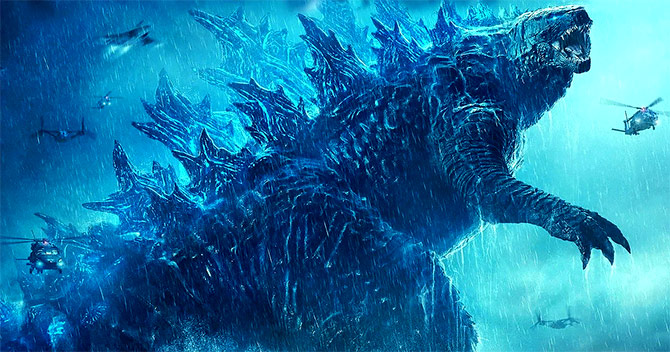Where the human aspect of Godzilla: King of the Monsters fails, technology more than does its bit. The glee it evokes, no matter how meaningless or momentary, is worth the price of admission, feels Sukanya Verma.

At the end of his rambling speech, a character in Godzilla: King of the Monsters credits a fortune cookie as the source of his wisdom.
Too often the script of the sequel to the 2014 reboot appears to have sprung out of a fortune cookie.
One that probably read: Man proposes. Godzilla disposes.Â
Once again the prehistoric sea monster is towering above puny humans and fighting beastly threats of mass extinction in ways that will set the box office on fire and pave the way for a long-overdue rumble between Godzilla and King Kong (coming to a theatre near you in the first quarter of 2020). Â
As thrilling this moment of wish-fulfilment is for everyone who has grown up worshiping Toho’s kaiju universe, the inferior storytelling served by director Michael Dougherty and his co-writer Zack Shields in Godzilla: King of the Monsters is a real bummer.Â
More filler than consummate, Dougherty’s follow-up loosely connects the catastrophic events of the 2014 movie to the new one. Â
Following a great personal loss, a husband and wife go their separate ways while their only surviving child -- a 12-year-old daughter (the exceptionally perceptive Millie Bobby Brown better known as Eleven of Stranger Things) -- is caught in their ideological crossfire. Â
One half of this duo, a paleobiologist (Vera Farmiga exhibiting half-hearted shades of grey) of the floundering crypto-zoological agency, Monarch, builds a bioacoustics-analysing device that’s capable of manipulating the hibernating big fellas referred to as Titans.Â
Her estranged husband (Kyle Chandler, unable to rise above a super dull part), specialising in wildlife behaviour, reluctantly agrees to assist Monarch geeks (Ken Watanabe, Sally Hawkins, Zhang Ziyi, Bradley Whitford) after an eco-terrorist (a seething Charles Dance) abducts his wife and kid in his pursuit of restoring natural order. Â
Perfectly decent actors transform into self-serious fools, with the exception of the zany Whitford, to accommodate the burgeoning clichés, sacrifices and cheesy platitudes leading to Godzilla’s wafer-thin metaphors and heavy-handed mythology.
The world you see is much too cardboard and its inhabitants easily dispensable to support any of that schlock.
What matters is that Godzilla has company.
Mothra, Rodan and the three-headed dragon Ghidorah, along with some other colossal beings, get into heated arguments over alpha matters. Â
Their violent clashing while ant-sized humans run helter-skelter across the globe and buildings crumble inestimably is its only sublime pay-off. Â
Completely doing away with the meditative, lyrical brooding of its prequel, this one’s in a mad rush to choreograph creature confrontations.
Devoid of any foreplay, the action, as glorious as it is, doesn’t have a lasting impact.Â
It’s not all disheartening.
There’s tons of puerile fun to be found.
Think of it as an indulgent father spending millions on a VFX app to film his kid’s animated, indiscriminate fight of action figures.
The glee it evokes, no matter how meaningless or momentary, is worth the price of admission.Â
Where the human aspect of Godzilla fails, technology more than does its bit.
The special effects are seamless and create visuals so exquisite, it’s like beholding a watercolour painting dominated by hues of blue and gold.
Breathtaking moments of atomic firing between upgraded creature designs as well as their swaggering introduction scenes -- like Rodan dramatically emerging from a fiery volcano is pure awe -- ensure Godzilla and gang deliver a bang for your buck.  Â
Next stop: Skull Island. I've already picked a side and it's certainly not human.  Â


